艺术家专访 Artist Interview
对话艺术家 |卞青
Q:首先想问问对于本次展览的名字《等待》,您有怎样的看法?
卞青:我觉得这其中存在着一种时间感,在等待某种特殊感觉的到来,感觉到了才会生发出后续的一切。“感觉”其实说的是此时此刻那种相应的感受,是需要等待的。但我觉得在这种等待的过程中,其实并不是一种紧张的状态,相反是一种相对放松的状态,是自然而然地、不自觉地去发现的。有时候太刻意反而会适得其反。比如有时候我们过于刻意地去找一种好吃的东西,其实很难,但某一刻你恰好碰上了,也许就会唤醒某一种感觉或记忆。
因为万物都是一体的,也许在你打开感官的某个瞬间,就会感知到很多与你相应的东西,在你封闭起来的时候,这些东西也存在着,只不过感受不到。其实在你有需求的时候,万物都在回应你,你有疑惑的时候,万物都在给你答案。只不过有些人敏感,有些人相对不那么敏锐,他就察觉不到。
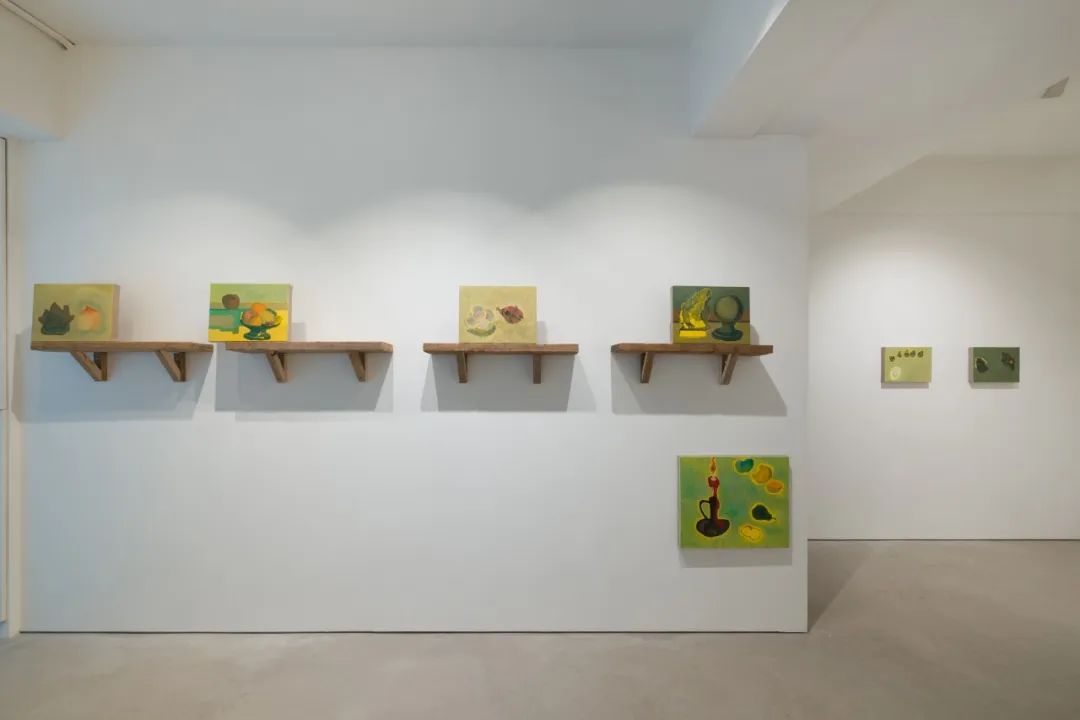
展览现场
Installation View
Q:最早了解您,其实是通过您有关山水的作品,这次在形式及内容上相较之前有一个比较大的转变。能请您谈谈这种转变吗?
卞青:其实现在的这些也是山水,只不过山水离我越来越近了。现在回归于一些离我更近的、手头的东西,会更加随意、轻快一点。
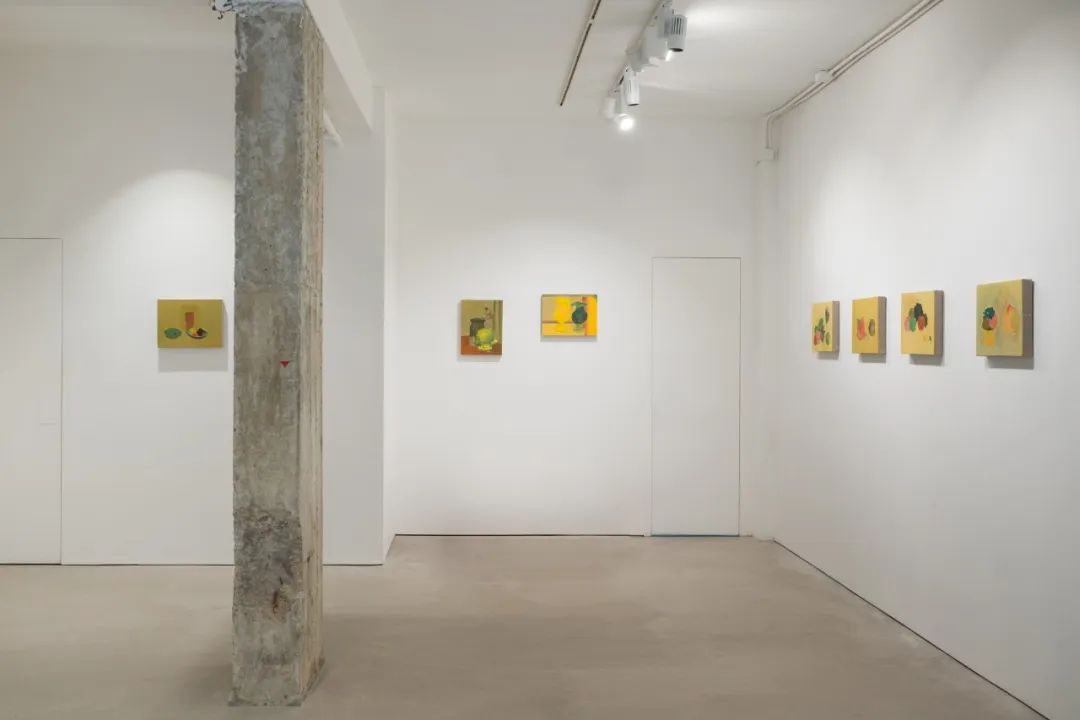
展览现场
Installation View
Q:您大概是从什么时候开始创作这批作品的?另外您的每幅作品是从何开始,又是如何结束的呢?
卞青:这些作品大致是从四年前开始创作的,也就是2020年期间。这中间经历了几个阶段,也有很多过程,慢慢才有了我想要的那个东西。我的每幅作品,最开始主要是取像,从生活中寻找感觉,某一刻感觉有了,就可以开始了。同样的,结束也是凭借一种感觉。
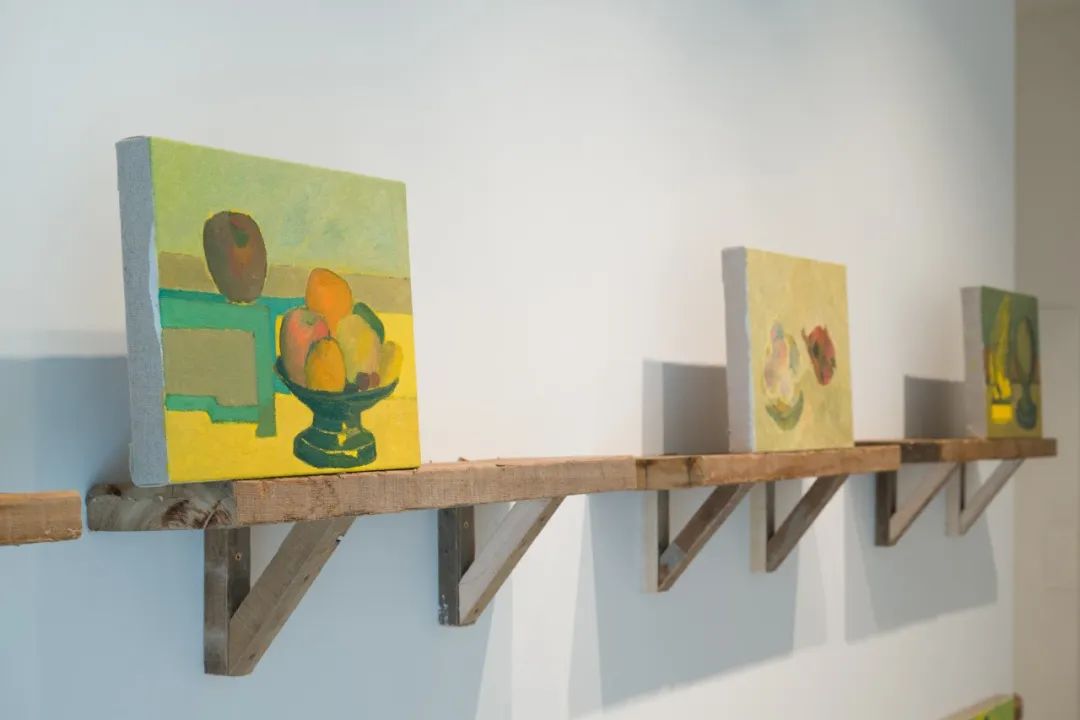
展览现场
Installation View
Q:在您的这批作品中,主要是以黄绿色相为主,有关色相选取方面可以请您介绍一下吗?
卞青:这种黄色其实跟画山水时的那种淡黄色类似,这一点可能跟宣纸这种材料有关系,因为我平时在宣纸上随手画的那些小稿,也是这种颜色。同时我觉得这种黄与符纸所呈现的黄色也相关。那么其中的这个绿色,其实是跟黄分不开的,因为在调色的时候这种绿色自然而然地就出现了。
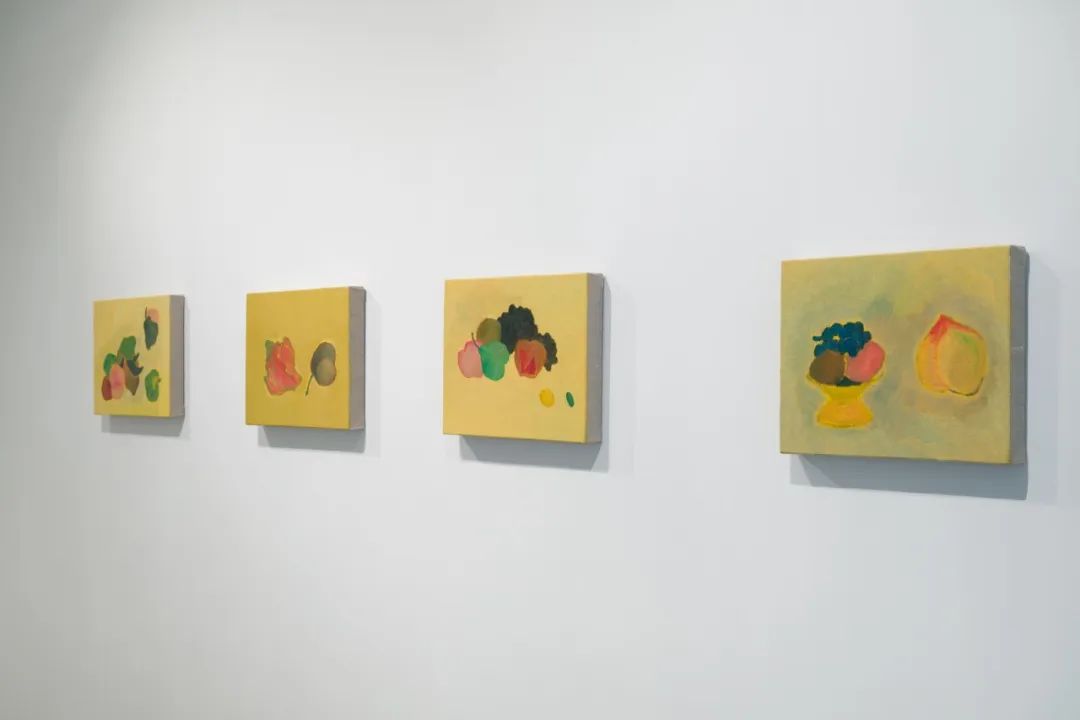
展览现场
Installation View
Q:在中国的绘画系统中,其实会把一些画面进行区分,包括冷与暖、平面与立体、抽象与写实等等,但我感觉您的创作其实不在这种科学的、外在的程式之下的,您是从一种更为内在的角度去发现并选取对象并进行创作的,在您看来是这样吗?
卞青:其实就是一种“觉”,通过一种感知的方式,等待和这种感觉产生共鸣的那个时刻。
Q:那么这些画面算是写生吗?
卞青:有些作品局部会写生,有的不太写生。因为这个写生与否,对我而言没有特定的要求。也许某一刻我觉得可以写生,那么就会写生;相反没有这种感觉的时候,就不需要写生。其实主要还是凭借感觉,有些东西可以很具体、很深入,同时也可以没有。包括材料与风格,这些我都不去特别限定,完全依据我某一时刻的感觉来判断,我那一刻觉得它是什么、应该怎样,那么就怎样来创作。其实就是用古老的起卦取像外应的逻辑,再说当下的事。
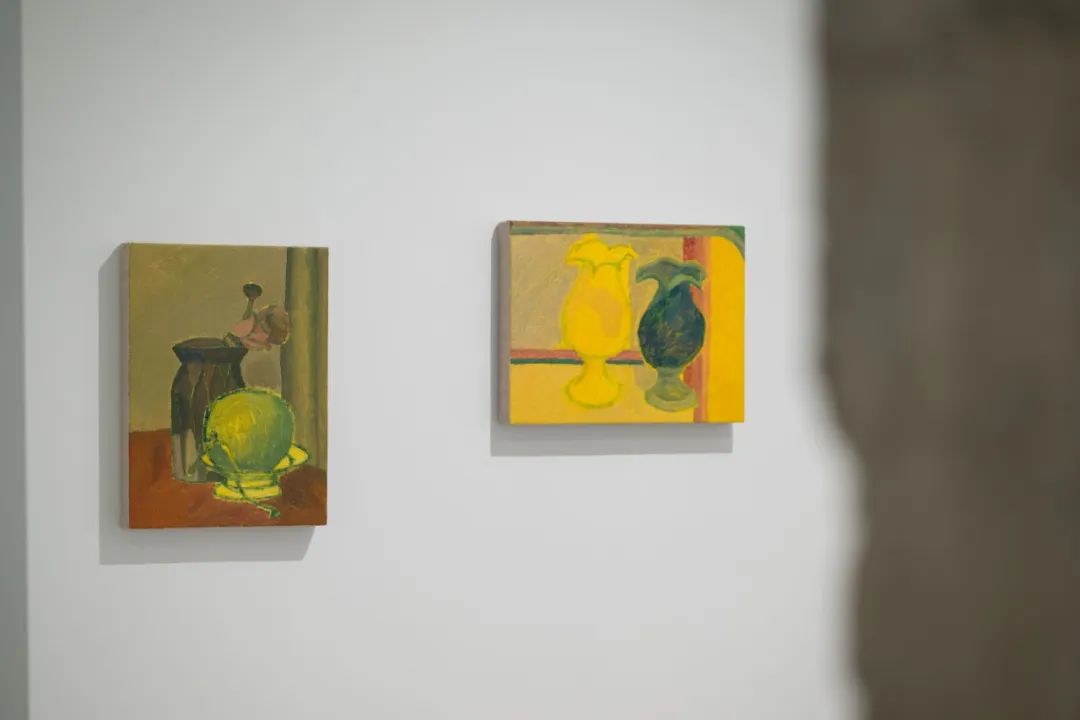
展览现场
Installation View
Q:在您的其中一张作品中,有一个形象最初表现的是火龙果,现在看起来反而更像一个辣椒,您对于这种绘画过程中的变化是怎样看待的?
卞青:这张画最初在取像时,我其实想画的是一个海螺,同时我也想要画一个火龙果,所以我就呈现了一个海螺的形,然后把火龙果的颜色画上去了。其实这种“像”是可以叠加的,像画面右边的这个梨,其实也是由一个桃子和一个梨叠加出来的。其实这些都源于当时那一刻的感受,可能会觉得它实际上融合了两种东西。显像的东西其实是可以万变的,因为画画跟科学实验有所不同,是一个非常自由的过程。

展览现场
Installation View
Q:您作品中的物象基本是两组或三组并置呈现的,那么对于这些物象之间的关系您是怎样设置的?
卞青:其实我画的时候每个物体之间都是推着画的,铺色也是从局部开始的。可能画完一个物象之后,另外一个物象又会是另一刻的感觉。所以其实它们放在一起的时候,我并没有考虑它们之间是否存在关系。其实我觉得它们被放置在一起,就会自然地产生一种关系,并不需要刻意地用色彩呼应这种关系。因为我在画某一个东西的时候,完全不会去考虑另一件东西要怎么表现,画面就自然会有一种断裂的感觉,并非是统一在一个系统之中。对我来说这是一种自由。

展览现场
Installation View
Artist Interview|Bian Qing
Q: Firstly, I would like to ask for your thoughts on the title of this exhibition, "Awaiting".
Bian Qing: I believe it carries a sense of time, that we all are waiting for a certain special feeling to arrive — only when that feeling arises can everything else follow. "Feeling" refers to the corresponding emotions in the present moment, which requires waiting. However, I think during this process of waiting, it is not a state of tension but rather a relatively relaxed state, a natural and unconscious discovery. Sometimes, being too deliberate may lead to an opposite effect. For example, when we deliberately seek something delicious at a restaurant, it becomes harder for us to find, but there may be a moment when you happen to encounter it, awakening a certain feeling or memory.
Since everything is interconnected, in a certain moment when you open your senses, you may perceive many things that correspond to you. When you close yourself off, these things in fact still exist, only that you cannot feel them. In reality, when you have a need, everything responds to you; when you are in doubt, everything provides you with answers. It's just that some people are more sensitive, while others are relatively less perceptive, so they don't notice it.
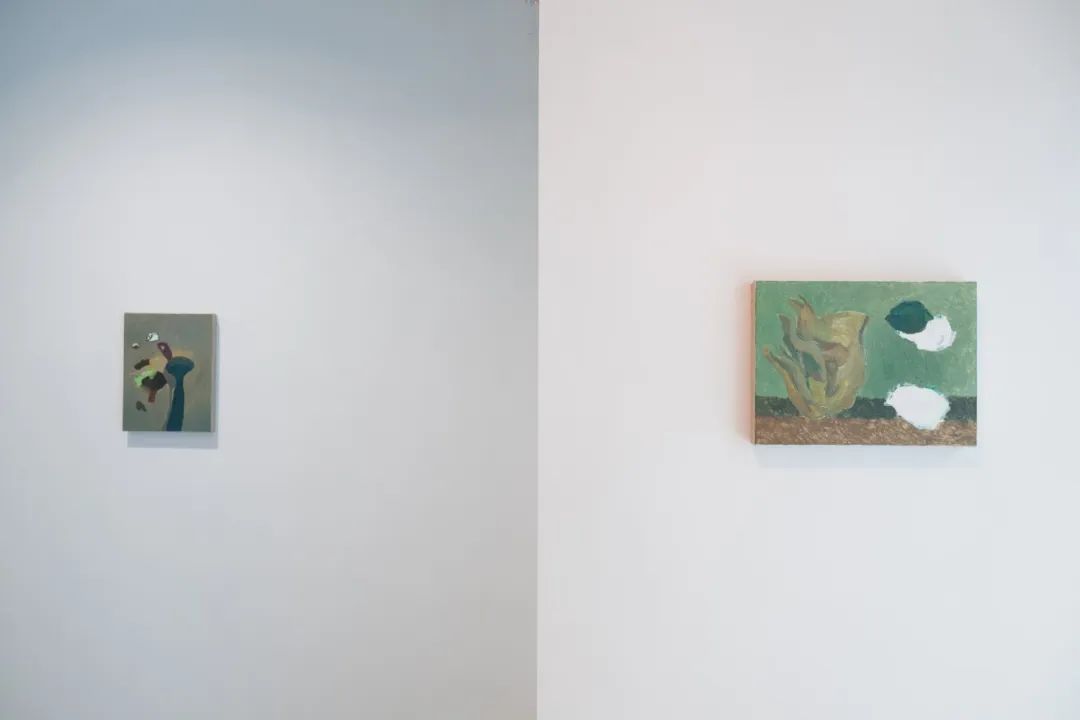
展览现场
Installation View
Q: I first became acquainted with your work through your landscape pieces. This time, there seems to be a significant shift in both form and content compared to your previous works. Could you please discuss this transformation?
Bian Qing: In reality, my current works are still landscapes, but the landscapes have come closer to me. Now, I've returned to things that are closer to me, which are more casual and light-hearted in nature.
Q: Since when did you start creating this series of artworks? Additionally, could you describe how each of your artworks begins and ends?
Bian Qing: I began working on these artworks approximately four years ago in 2020. It went through several stages and involved various processes before I achieved what I desired. For each of my artworks, it starts primarily with capturing an image, seeking a feeling from my daily life. Once I sense that feeling at a certain moment, I can begin creating. Similarly, the ending is also guided by a particular sensation.
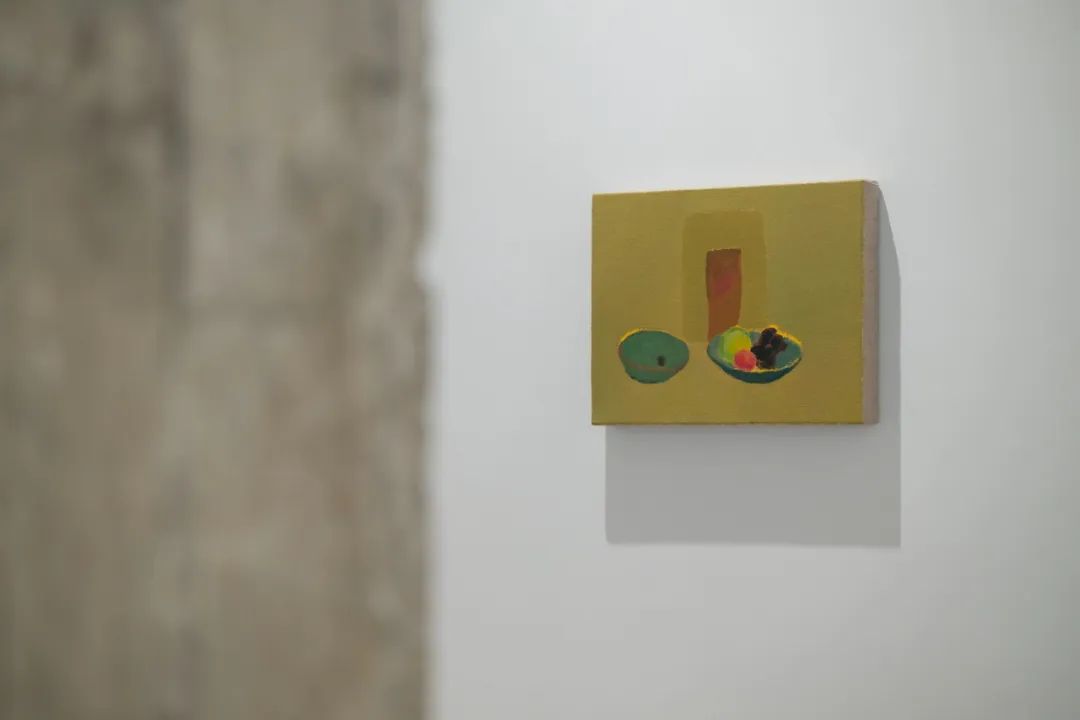
展览现场
Installation View
Q: In this series of artworks, there is a predominant use of yellow and green tones. Could you please explain the selection process for these colors?
Bian Qing: The yellow used in these artworks is actually similar to the light yellow often seen in landscape paintings. This may be influenced by the material I use, Chinese rice paper, as even the quick sketches I make on the rice paper tend to have a similar color. Additionally, I find a connection between this yellow and the shade of yellow found in Taoist talismans. As for the green, it naturally emerged during the process of mixing colors and is inseparable from the yellow tone.
Q: In the Chinese painting system, there are often distinctions made in terms of the temperature of colors, two-dimensionality versus three-dimensionality, abstraction versus realism, and so on. However, I feel that your creative process goes beyond these scientific and external frameworks. It seems that you discover and select subjects for your artwork from a more internal perspective. Is that how you see it?
Bian Qing: Indeed, it is a matter of "perception", It involves waiting for the moment when there is resonance between the waiting and the feeling.
Q: So are these artworks considered as sketches?
Bian Qing: Some of the artworks involve partial sketching, while others do not. There isn't any specific requirement for me to consider whether or not I make sketches for a particular piece. Sometimes, I feel like it's appropriate to make sketches, and in those instances, I do so. On the contrary, if I don't feel the need for it, I simply don’t do any of it. Ultimately, it's based on my feelings. Some images can be very specific and in-depth, while others may not require that level of detail. This applies to both materials and styles. I don't impose strict limitations on them and I rely entirely on my feelings at a particular moment to determine what something is and how it should be created. It's essentially using ancient divination methods, like casting hexagrams, to derive symbolic interpretations, and then applying those to discuss current events.
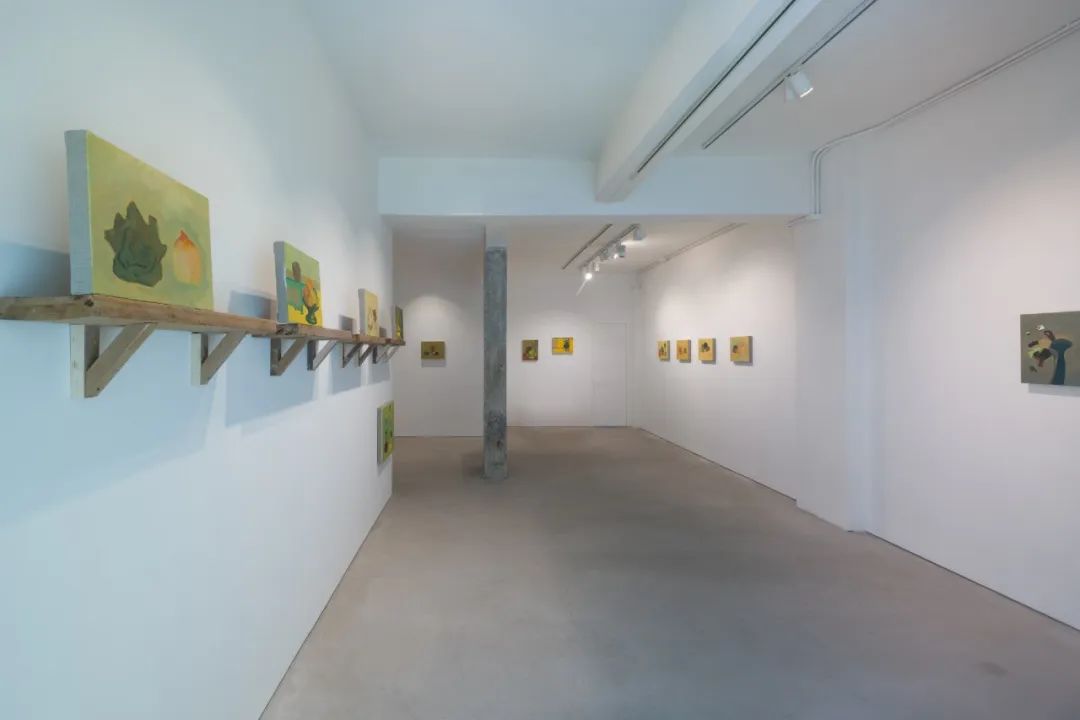
展览现场
Installation View
Q: In one of your artworks, an image initially appeared to be a dragon fruit, but now it resembles a chili pepper. How do you perceive these changes in the painting process?
Bian Qing: When I initially sought an image in that particular painting, I intended to depict a seashell. At the same time, I also wanted to portray a dragon fruit. So I presented the form of a seashell and added the colors of a dragon fruit. These "images" can be layered as in the pear on the right side of the painting is actually a combination of a peach and a pear. These choices stem from the feelings I had at that moment, where I felt that it merged two different elements. The depiction of things can be highly variable because painting is different from scientific experiments. It is a highly liberating process.
Q: In your artworks, objects are generally presented in pairs or trios. How do you establish the relationships between these objects?
Bian Qing: When I draw, I push each object forward and apply colors starting from specific areas. After completing one image, the next one may arise from a different moment or feeling. Therefore, when these objects are placed together, I don't deliberately consider the specific relationships between them. I believe that placing them together naturally generates a certain relationship, without the need to consciously use colors to establish it. When I draw, I don't think about how the other image should be depicted. The composition naturally creates a sense of disintegration rather than unification within a system. For me, this is a form of freedom.
©文章版权归属原创作者,如有侵权请后台联系删除
